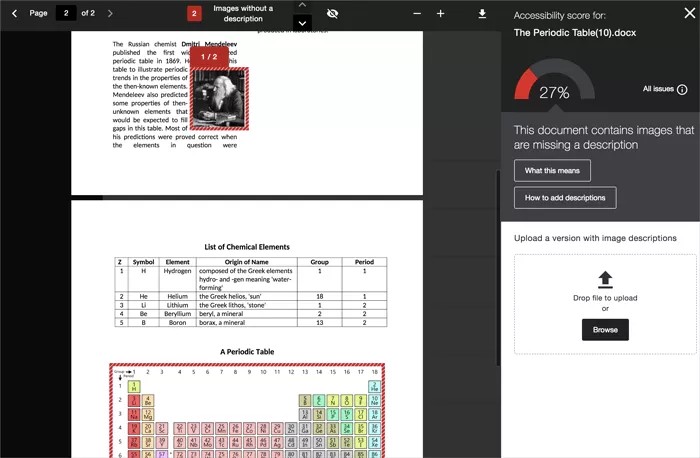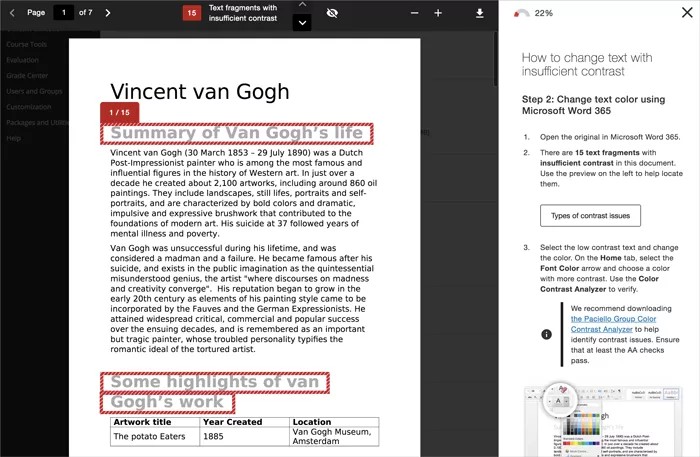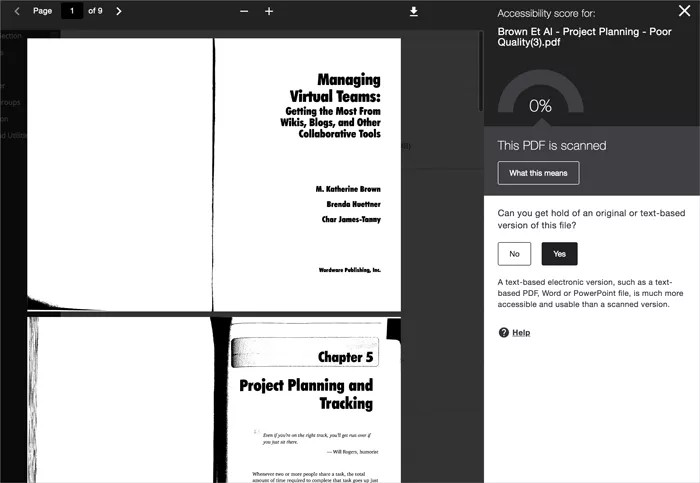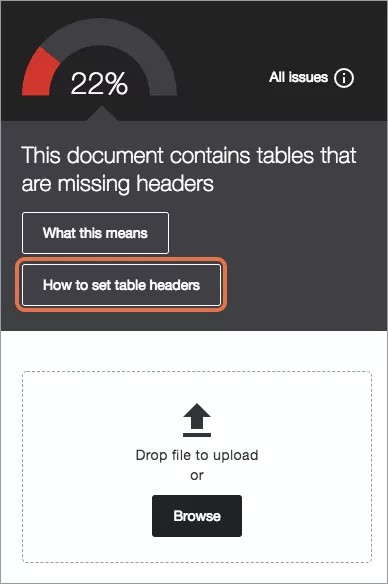Add Headers to Document Data Tables
Headers make navigating tables easier
Using tables in your documents can be a great way to help organize complex information for students. To make sure your tables are effective and accessible, however, you should only use them for data, and not for visual layouts. Adding headers to your tables improves how your students navigate tables, especially if they use a screen reader.
If your document data table is missing headers, the file gets a low accessibility score indicator.
Fix this issue in your word processing software and upload a new file when ready. Select the Accessibility score indicator to learn how to do this. Select What this means for an explanation.
Preview Where the Accessibility Issue Is
See where this issue is
The preview highlights where specific accessibility issues can be found in the document. Highlights show every occurrence of one issue type at a time. For example, if your images are missing alternative descriptions, the highlights show you every place this specific issue occurs. If your document also has poor text contrast, select that issue in the feedback panel to see the occurrences of that issue highlighted.
Highlights are provided for these issues:
- Images without an appropriate alternative description
- Text fragments with insufficient contrast
- Tables without table headers
All other accessibility issues are not highlighted in the preview.
Missing text description
Text contrast
Scanned PDF
Preview tools
Use the tools above the preview to explore the issues in your document.
- Move through the document preview page by page.
- See how many times a specific issue appears in the document.
- Jump between the issue highlights.
- Hide or show the highlights.
- Zoom the preview content in or out.
- Download the original file.
Add headers to your document data tables
You need to fix this issue in your word processing software. Open the document, add table headers, and upload the updated file to your course. Select How to set table headers for step-by-step guidance on how to do this.
Not familiar with creating tables? Select your preferred software instructions in the instructor feedback panel and select Tips for creating tables.
- Select How to set table headers and follow the instructions.
Open the file on your computer.
If you don't have a copy of the file on your computer, leave the instructor feedback panel and download the file from the course.
- Set table headers.
Microsoft® Word: Review the text in the first row of the table. It should make a good header. Select the first row of the table. Select Table Design. Select Header Row. Right-click the first row of the table and select Table Properties. Select Row and Repeat as header row at the top of each page. Select OK.
If 'Repeat as header row at the top of each page' isn't selected, table headers are ignored when exporting as a PDF and won't be read by screen readers.
- LibreOffice Writer: Review the text in the first row of the table. It should make a good header. Right-click the first row of the table and select Table Properties. Select Text Flow and Repeat heading.
- Save the file.
Upload the updated file to your course.
If you still have the instructions open in the instructor feedback panel, select Next and Browse to upload your file. If you don't have the instructor feedback pane open, select the Accessibility score indicator next to the file in your course and select Browse to upload your file.
Table header best practices
Follow these best practices to create good column headers for tables:
- Use your preferred word processing software tools to identify headers.
- Write clear and concise headers.
- Make sure each header and their associated cells make sense when read together.
- Keep the table layout simple. Screen readers keep track of where you are in the table by counting cells and lose count with complicated layouts.
- Don't merge cells, split cells, or nest tables in tables.
- Don't leave rows or columns completely blank.
Why are table headers important?
- Table headers are in the WCAG 2.2 guidelines.
- Sighted users can scan the table and understand the meaning of the information.
- Screen readers read one cell at a time and reference the associate header. This means users don't lose context as they navigate through the table.






 Ally 사용자 그룹에 참여
Ally 사용자 그룹에 참여